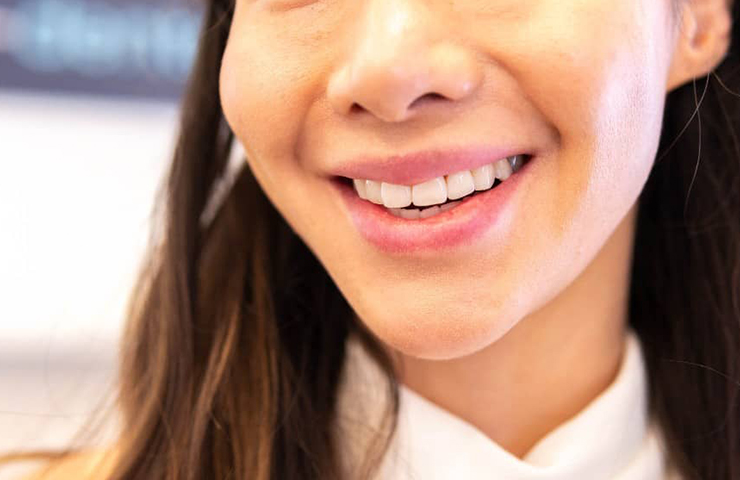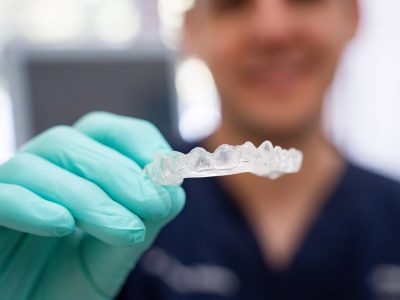Can Fluoride Make Your Teeth Whiter?
Fluoride is a well-known ingredient in toothpaste, mouthwash, and even drinking water, primarily used to strengthen enamel and prevent cavities. However, many people wonder: does fluoride whiten your teeth? While fluoride plays a crucial role in oral health, its effects on tooth colour are often misunderstood.
In this article, we’ll explore the role of fluoride in dental care, whether it can contribute to a whiter smile, and how it compares to other whitening methods.
Key Takeaways:
- Fluoride does not bleach teeth but helps prevent staining.
- It strengthens enamel, making teeth more resistant to yellowing.
- For visible whitening, peroxide-based treatments are recommended.
- Regular dental check-ups and professional cleanings can enhance your smile.
What Is Fluoride and How Does It Work?
Fluoride is a naturally occurring mineral found in water, soil, and certain foods. It has been widely incorporated into dental care products due to its ability to reinforce tooth enamel, making it more resistant to acid attacks from plaque and bacteria.
Key Benefits of Fluoride for Your Teeth
- Strengthens Enamel: Fluoride remineralises weakened enamel, helping to prevent tooth decay.
- Reduces Cavity Risk: By making teeth more resistant to acid, fluoride lowers the chances of developing cavities.
- Helps Prevent Stains: While it does not actively whiten teeth, fluoride strengthens enamel, making it more resistant to staining from foods, drinks, and plaque buildup.
However, despite its many benefits, fluoride is not a bleaching agent. This means that while it can help prevent discolouration, it does not directly whiten teeth.

Does Fluoride Whiten Teeth?
Fluoride does not whiten teeth in the same way as peroxide-based whitening agents. Instead, it supports a healthy, bright smile by protecting enamel and preventing stains before they develop.
How Fluoride Contributes to a Brighter Smile
- Prevents Plaque Buildup: Plaque can lead to a yellowish appearance. Fluoride helps minimise plaque formation, keeping teeth cleaner.
- Protects Against Stains: Strengthened enamel is less porous, meaning it is less likely to absorb pigments from coffee, tea, red wine, and other staining foods.
- Keeps Enamel Smooth: Smooth, well-maintained enamel reflects light better, making teeth appear shinier and healthier.
While these benefits contribute to maintaining a bright smile, they will not lighten existing stains or change the natural shade of your teeth. If you’re looking for a more noticeable whitening effect, other treatments may be necessary.

Fluoride vs Whitening Agents – What’s the Difference?
To understand why fluoride does not actively whiten teeth, let’s compare it with peroxide-based whitening agents.
| Feature | Fluoride | Whitening Agents (Hydrogen/Carbamide Peroxide) |
|---|---|---|
| Primary Function | Strengthens enamel, prevents decay | Removes stains and lightens tooth colour |
| Effect on Colour | Helps maintain natural shade | Actively whitens teeth |
| Stain Removal | Prevents future staining | Removes existing stains |
| Common Products | Fluoride toothpaste, mouthwash, dental treatments | Whitening toothpaste, strips, gels, professional treatments |
While fluoride is essential for long-term oral health, it should not be relied upon as a whitening solution. If you want a noticeably brighter smile, consider combining fluoride with a dedicated whitening treatment.
How to Use Fluoride for a Healthier, Brighter Smile
Although fluoride does not whiten teeth, it plays a key role in maintaining a healthy, stain-free smile. Here’s how you can make the most of fluoride in your daily routine:
1. Use a Fluoride Toothpaste
Opt for a fluoride toothpaste with at least 1,000-1,500 ppm fluoride for adults. Some toothpaste formulas also contain mild abrasives to remove surface stains while strengthening enamel.
2. Get Professional Fluoride Treatments
Dental clinics offer fluoride treatments in the form of gels, foams, or varnishes. These treatments contain a higher concentration of fluoride than over-the-counter products and can significantly enhance enamel strength. Consider booking a dental check-up and cleaning to maintain optimal oral health.
3. Use a Fluoride Mouthwash
A fluoride mouthwash can provide additional protection by reaching areas your toothbrush might miss. It also helps remove food particles that contribute to plaque and staining.
4. Maintain Good Oral Hygiene
Brushing twice a day, flossing daily, and visiting your dentist for regular check-ups will help prevent plaque buildup and keep your teeth looking bright.
While fluoride is essential for dental health, if you’re looking for a whiter smile, you may need to explore other whitening solutions.

Alternative Teeth Whitening Methods
For those seeking whiter teeth, consider the following options in addition to using fluoride-based dental care products:
1. Whitening Toothpaste
Unlike regular fluoride toothpaste, whitening toothpaste contains:
- Mild abrasives to remove surface stains
- Low concentrations of hydrogen peroxide to gradually brighten teeth
2. Professional Teeth Whitening
For the most effective results, professional teeth whitening treatments use higher concentrations of hydrogen peroxide to break down deep stains and significantly brighten your teeth.
3. Natural Whitening Methods
Some natural remedies may help remove minor surface stains, including:
- Baking Soda: Acts as a mild abrasive to scrub away stains.
- Activated Charcoal: Absorbs surface stains but should be used sparingly to avoid enamel erosion.
- Oil Pulling with Coconut Oil: May help reduce plaque, though scientific evidence is limited.
4. Lifestyle Changes to Prevent Staining
To maintain a whiter smile, consider:
- Reducing coffee, tea, red wine, and soda intake
- Using a straw to minimise contact with staining beverages
- Quitting smoking, as tobacco is a major cause of yellowing teeth
By combining fluoride with effective whitening techniques, you can achieve a healthier, whiter smile.
Final Verdict – Can Fluoride Help Whiten Your Teeth?
So, does fluoride whiten teeth? Not directly. Fluoride’s primary function is to strengthen enamel, prevent cavities, and protect against stains, all of which contribute to a brighter smile. However, it does not bleach teeth or remove existing stains.
For noticeable whitening, you may need to use whitening toothpaste, professional treatments, or natural remedies alongside fluoride for the best results.
If you’re looking for a whiter, healthier smile, consider professional teeth whitening alongside a strong fluoride routine.






